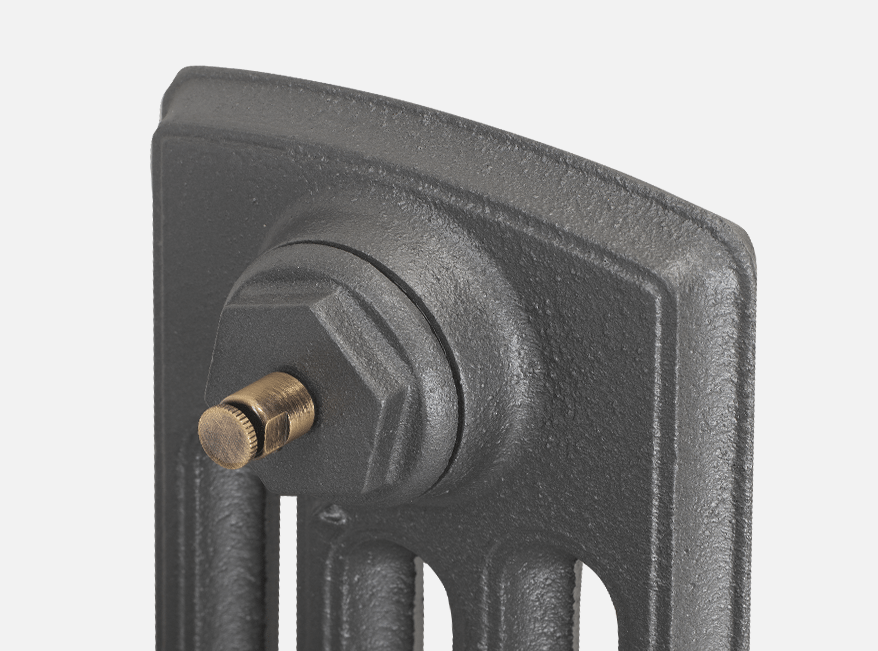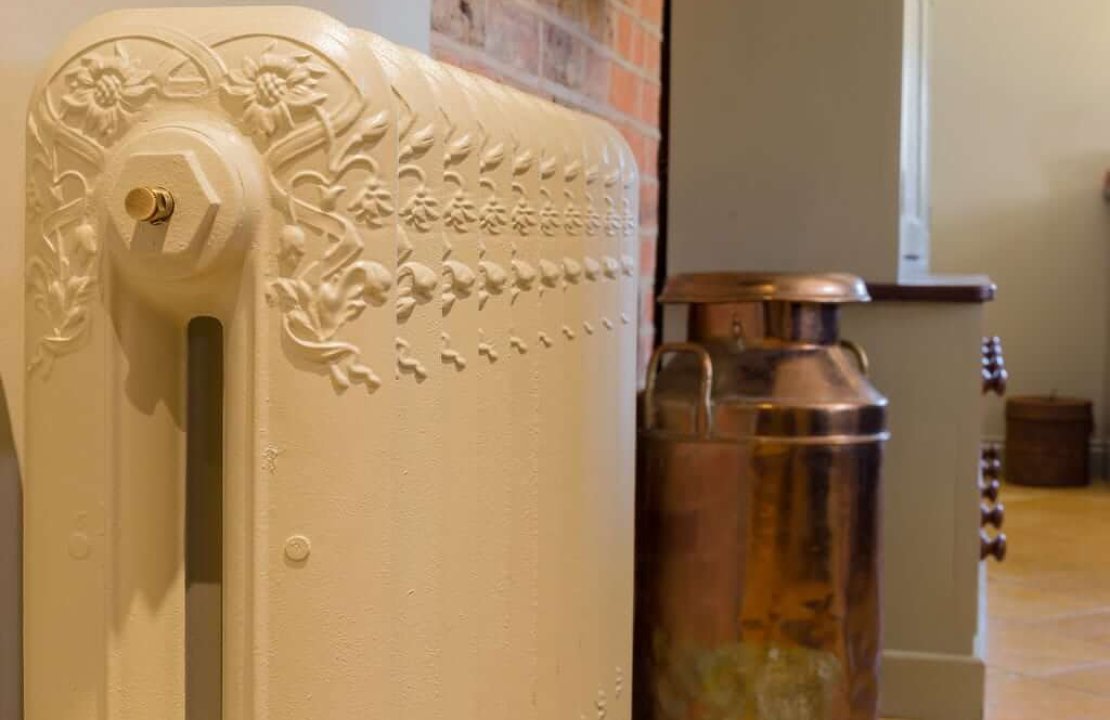We’ve written a brief guide on how to bleed your cast iron radiators which will help ensure that your radiators work as efficiently as possible.
What does bleeding the radiator mean?
Bleed valves / air vents are used to bleed any excess air from the radiator which might have been taken in during radiator installation. Bleeding will ensure that your cast iron radiator is fully efficient as all inner surfaces will be filled with hot water to the very top of the radiator and all air pockets will be eliminated. If your cast iron radiator is not heating up sufficiently this is most likely to be due to the fact that the air vent needs bleeding.
How will I know if my radiators need to be bled?
If your radiators feel cooler at the top than the bottom, the most common reason is that air has entered the central heating system. Bleeding radiators is a job that most competent DIYers will be more than capable of.
It’s best to go around the house while all of the radiators are on and feel for cold spots. You may well find that some radiators do not need to be bled even if some do. If there are no cold spots, the radiator does not need bleeding. Make a note of which do and don’t’ need bleeding.
What to do before bleeding the radiators?
Have a towel handy to protect you from hot water splashes as you bleed the radiators. As you’ll probably be kneeling on the floor to do this job, use a towel or knee pads to kneel on to protect your knees. They’ll get tired if you have radiators that need bleeding in every room of your house.
You need to find the bleed valve on the radiator which is usually located near the top of the radiator on one side. If all of your radiators are the same style, the bleed valve will be in the same location on all of the radiators. If you have several radiator styles in your house for example cast iron and steel column radiators, the location of the bleed valve may change.
You’ll need to use a radiator key or flat blade screwdriver to turn the valve to bleed each radiator. Radiator keys can be purchased from DIY stores.

So how do I do it?
Follow our step by step guide if you have not bled your radiators before.
Firstly switch off the central heating.
Once you’ve located the bleed valve, open it until water starts to bubble out. You'll need to use your bleed key or screwdriver to do this and it’s best to wrap your bleed key or screwdriver in a towel or cloth to protect your hand from the hot water which will escape.
Turn the valve approximately half a turn anticlockwise to open it. Air should come rushing out of the valve. If you place your towel over the hole, it will protect you from getting burnt where hot water will also come out of the radiator. Once water starts coming out, close the valve quickly again using your bleed key or screwdriver.
Repeat the radiator bleeding for all radiators to ensure you have drained air out of the entire central heating system.
The process of bleeding the radiators may affect the pressure in the central heating system as some water will have been lost. If the pressure gauge on your boiler does not show the pressure your plumber or boiler manufacturer recommends for your system, let more water into the system. Usually this is done by opening a valve that lets more water into the system.
Once all the radiators have been bled you can turn the central heating system back on and enjoy toasty warm radiators. It’s worth double checking once the system is back on that there are no more cold spots on the radiators you have bled.
Our cast iron radiators come with a brass bleed valve as standard but we also offer a range of radiator bleed valves in a selection of beautiful finishes.

Be the first to add a comment...